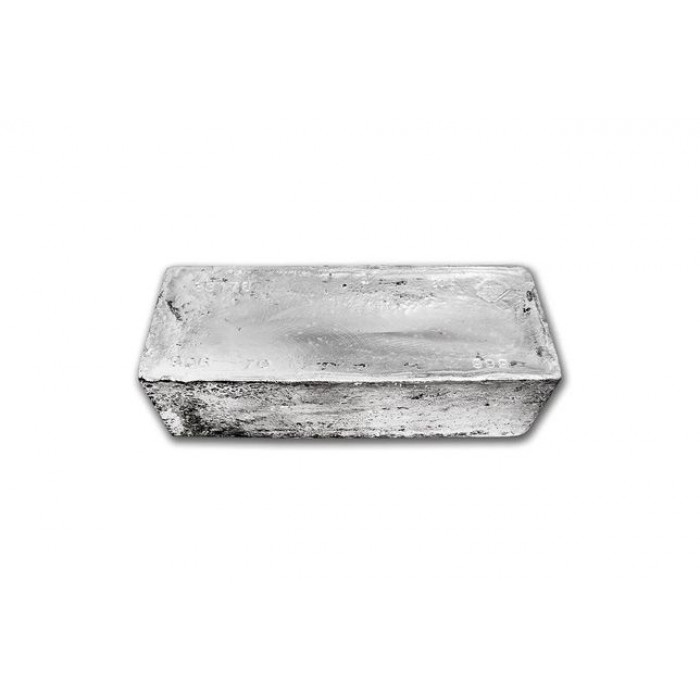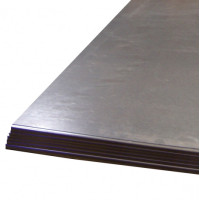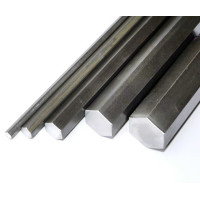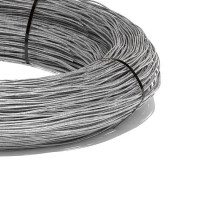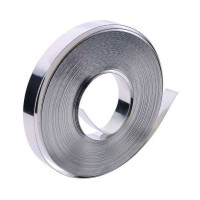Ishmael zinc Ts0, TsAM ingot, lead C1, nichrome wire Kh20N80, fekhral Kh23Yu5T
TsAM scrap is galvanized alloys, which are based on zinc, aluminum, copper, produced in accordance with GOST or TU. The abbreviation ZAM stands for a family of alloys produced by casting, antifriction melting, and pressure melting. These categories of alloys are characterized by high corrosion resistance, low cost and good performance characteristics. The alloy is used everywhere in the manufacture of sanitary ware, in the automotive industry, hydraulics, in the production of decor and consumer goods.
What products are made using zinc
- Cases of carburetors;
- Hydraulics of the brake system of the car;
- Knobs and flywheels mixers;
- Decorative products;
- Accessories;
- Radiator grilles;
- Pump impellers.
How to distinguish ZAM from aluminum
This type of scrap is most often confused with aluminum, due to visual similarity, but there are several signs that allow you to accurately determine the TsAM:
- More weight than aluminum;
- Porous, not homogeneous surface for chipping;
- Brittle, not malleable (like aluminum).
- If you do not know how to distinguish TsAM, bring scrap to our site. On site, the receivers will sort the metals and offer payment for each type of recyclable material. A typical place of application for zinc alloys is VAZ radiators, hydraulic brake parts, gasoline pumps and assemblies where stable geometry and resistance to adverse environmental conditions are required.
Types of TsAM
Since this alloy is a composition of aluminum, copper and zinc, different percentages lead to the formation of different technical properties and characteristics.
Typical compositions:
- TsAM according to the classical formula (1929) - zinc (95%), copper (1%), aluminum (4%);
- TsAM 10-5, 9-15 - anti-friction alloys 10-5 (10% aluminum, 5% copper), 9-15 (9% aluminum, 15% copper);
- TsAM with the content of babbitt, bronze, brass.
Application of zinc
To protect metals from corrosion
Pure zinc is used to protect metals from corrosion. The base is covered with a thin film. This process is called metallization.
In the automotive industry
Zinc-based alloys are used to decorate car interiors, in the production of door handles, locks, mirrors and wiper housings.
Zinc oxide is added to automobile tires, which improves the quality of rubber.
In batteries, accumulators and other chemical current sources, zinc is used as a material for the negative electrode. In the production of electric vehicles, zinc-air batteries are used, which have a high specific energy intensity.
In the production of jewelry
Jewelers add zinc to gold-based alloys. As a result, they are easy to forge and become plastic - they firmly connect the small parts of the product to each other.
The metal also brightens jewelry, which is why it is often used in white gold making.
In medicine
Zinc oxide is used in medicine as an antiseptic. Oxide is added to ointments and other wound healing formulations.
Due to its properties, zinc is widely used in various industries. The metal is in demand due to its relatively low price and good physical properties.
TsAM alloys - composition, properties and scope
As a material, ZAM alloy was developed almost 100 years ago. The exact name of the person (or group of people) who did this is unknown. But we know that he was an employee of the American company the New Jersey Zinc Corporation. Every year, ZAM opens up new ways of using it in production, pushing out its old competitors from the market: aluminum and brass.
TsAM alloy in ingots
TsAM alloy composition
This is a type of zinc alloy, the main alloying elements of which are aluminum and copper. The abbreviation ZAM itself stands for zinc-aluminum-copper. The numbers indicated after the name of the alloy indicate the percentage of metals. So the designation TsAM 4-1 says that the alloy includes approximately 4% aluminum, 1% copper and 95% zinc. Also, CAMs always contain a small amount (up to 0.1%) of magnesium in their composition.
Zinc is a ductile metal with a silvery and white hue. Quite fragile. It features low melting point, high fluidity and low cost. It is the basis for the CAM.
Aluminum reduces the solubility of iron in the alloy, which favorably affects the mechanical and casting characteristics of TsAM. In addition, aluminum reduces the effect of zonal segregation. Promotes grain refinement.
Copper is introduced into the alloy in order to increase its strength characteristics. One percent copper increases the hardness value of ZAM by about 7%. The reverse side of this alloying is the deterioration of the corrosion-resistant and ductile properties of the alloy.
Magnesium is a component responsible for the containment of the nucleation of corrosion centers by ZAM, including its worst variety - fine-grained. It also slows down the aging process inalloy. Excessive alloying of TsAM with magnesium (over 0.1%) leads to a deterioration in ductility, strength and the appearance of signs of red brittleness.
In addition to the main elements, the alloy includes components that adversely affect its properties - harmful impurities. The reason for this is the imperfection of the smelting technology and the purity of the charge used. The most common impurities are:
Tin (up to 0.001%).
Lead (up to 0.007%).
Cadmium (up to 0.003%).
Iron (up to 0.1%).
The ingress of these metals with CAM leads to a decrease in mechanical characteristics, fluidity and increases the tendency to cracking.
Metallurgy offers over 25 varieties of TsAM, but the most common among them are such brands as:
Physical properties
The density of CAM is 6700 kg/m3. The melting temperature ranges from 380-387 degrees, depending on the grade of the alloy. ZAM begins to boil at a temperature of 710 C
Zinc alloy conducts heat well. The thermal conductivity coefficient is 110 W\m*K. It has a small coefficient of linear expansion. With an increase in temperature by 20 degrees, the length of the TsAM bar increases by 27.7 microns.
Mechanical properties
The strength of TsAM is comparable in its value to the strength characteristics of steel 20. The tensile strength is 245 MPa. It begins to deform at a load of 120 MPa. The hardness of the alloys on the Brinell scale is 95-100 units.
Plastic properties strongly depend on the quantitative content of alloying elements in the composition. Based on their content, the relative elongation in tension can range from 0.4 to 1.0%.
Chemical properties
ZAM alloys are characterized by good resistance to corrosion. Although a prerequisite for this should be the preliminary application of galvanic coatings to their surface. Actively interacts with most acids and alkalis.
TsAMs do not enter into chemical reactions with such chemical elements as nitrogen, carbon, hydrogen, boron and silicon. Inert to ammonia environment at temperatures up to 480 degrees.
Technological properties
Depending on the technological purpose, CAMs are divided into the following categories:
Cast alloys. This primarily includes TsAM 4-1 and 4-3. These grades are distinguished by increased casting properties. The value of their fluidity and shrinkage makes it possible to obtain thin-walled (up to 0.5 mm) castings of complex shape. The main method of manufacturing such blanks is injection molding.
Antifriction alloys (TsAM 9-1.5 and 10-5) are distinguished by a reduced coefficient of thorns, whose value reaches about 0.007 units.
Wrought ZAM alloys have increased ductility and reduced red brittleness, which allows them to be processed by pressure. In addition, they also lend themselves well to machining.
TsAMs belong to the third group of weldability. It is very problematic to obtain a high-quality weld for this alloy. One of such possible methods is the use of argon-arc welding with a copper or aluminum additive at direct current.
Also one of the advantages of zinc alloys is the possibility of finishing the surface. TsAMs lend themselves well to polishing and are not prone to nicks and burrs. TsAM is an alloy of zinc, aluminum, and copper, which is used to make plumbing and piping products, and parts for agricultural machinery and cars are made from it. When buying it, pay attention to the manufacturer, they must have a license to sell such goods. This will allow you to avoid buying a low-quality product. It is resistant to rust, temperature changes, and is very durable. This scrap is easy to process - it is cut, drilled, and welded. However, welding zinc is very problematic, for this they use argon-arc welding. When working with it, you should observe safety precautions - protect your hands with special gloves, and your eyes with protective glasses to avoid getting small particles into them. Furniture fittings are made from this alloy: handles for chests of drawers and cabinets, fasteners for cabinet doors and bedside tables.
No questions about this product, be the first and ask your question.

